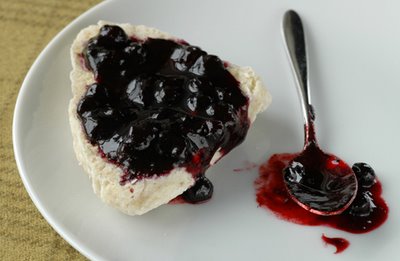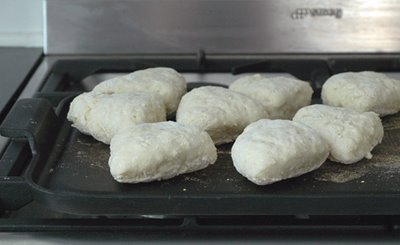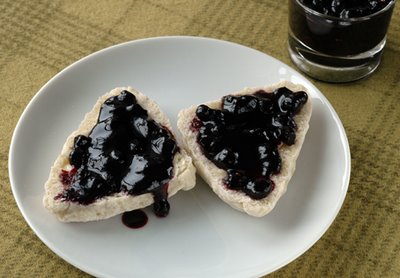
Andrew at SpittoonExtra recently posted a rallying cry to all bloggers to go out a bake a Bakewell Pudding/Tart. This in reponse to a recent article in The Grocer magazine and The Independent newspaper that suggests that the dish is falling out of favour. Mr. Kipling's exceedingly sweet and sickly rendition of the same item has seen a 31 per cent decrease in sales over the last year, that would be nice to put down to keen bakers making their own at home, but apparently the drop in popularity reflects the unhealthy ingredients and the fact we are all so damn health conscious. Hmmm. The presence of sugar, butter and eggs doesn't seem to effect the popularity of cakes generally, so I am not sure about this argument. Perhaps the Bakewell Pudding/Tart is seen as a old-fashioned food, and is simply passing out of fashion. Either way, it would be a great shame for a famed regional dish to simply fade away (I will weep no tear for Mr. Kipling however), and therefore I am firmly behind Andrew's suggestion that as many people as possible make and post a Bakewell Pudding/Tart before the end of the month.
But before I weary my fingers and your patience, I should briefly touch on the duality of the name. It is a tart or is it a pudding? The original dish was known as a Bakewell Pudding. The earliest recorded recipe, by Eliza Acton in 1845, indicates a pastry-less sweet; a dish lined with fruit preserves and topped with egg yolks beaten with sugar and butter, into which a small amount of almond flavouring was added (no ground almonds). As for the stories that attribute the origination of the dish to a clumsy cook at a Derbyshire Inn, who muddled up the making of a strawberry tart by putting the fruit mix straight onto the pastry base of a tart, rather than on the top of the butter, egg and sugar 'filling', I am pretty sure that there is no hard proof that this is the fact. Similar dishes to Bakewell Pudding were in existence for several centuries before Ms. Acton penned her recipe, many were variations on the Transparent Pudding. The Transparent Pudding recipes I could find on the internet all come from late 19th century American cookbooks, so the idea obviously travelled across the Atlantic via a pastry loving cook. Somewhere in Kentucky is a bakery that still makes them for sale. Maybe they are much more widely available than this? - do let me know.
Over the course of the nineteenth century, the Bakewell Pudding came to have a pastry base. Mrs Beeton in 1861 gives a recipe for one with a puff-pastry base. I can see that from then on the Bakewell Pudding could be legitimately be referred to as a tart, for it was baked within a pastry case. Recipes nowadays use either puff or shortcrust pastry, and the title is either for a Pudding or a Tart. In this instance I really don't think it matters too much. The orignal pudding has become a tart, so to my mind either name is valid.
At least two Bakewell-based bakers boast that they recreate the 'original' pudding/tart recipe, and even they can't agree on which name to go by. In Bakewell town there is both a Bakewell Pudding Shop, and aBakewell Tart Shop. If you go to the website of the Bakewell Pudding Shop, you can enter a competition to win one of their renditions of the pudding. Go on, it's worth a shot.
My recipe comes from one of my regular sources, Jane Grigson's 'English Food'. Her recipe is for a Bakewell Pudding, and she mentions that local to Bakewell it is always a pudding and never a tart. Her instructions are for one large pudding, but as I wanted to bake small puddings I have tweaked them a little.
Rich sweet shortcrust pastry (I made enough to line a 12 hole tart tin)
Raspberry/strawberry jam (decent stuff please - I bought raspberry jam but then couldn't get the blooming lid off it, so used strawberry instead)
65g unsalted butter
2 eggs
65g caster sugar
65g ground almonds
1. Preheat oven to 180C/350F/gas 4.
2. Roll out the pastry, press out circles of suitable size and use to line your tin.
3. Melt the butter and leave to cool.
4. Pop a little jam into the base of each pudding. Don't go mad, but put in enough to cover the base comfortably.
5. Beat the eggs and sugar until they are pale in colour and of a good thick cream consistency.
6. Add the butter and stir in, then fold in the almonds. Spoon mixture onto the jam layer - again don't go too mad or you'll end up with a big Bakewell mess when they cook.
7. My little tarts took approx. 15-20 minutes to cook. I whipped them out as soon as they reached a good colour.

I was rather pleased with my little puddings. They were extremely light and easy to consume. The egg, sugar and almond topping formed quite a thin layer, and I didn't really notice a strong almond flavour. I think that the ground almonds served to bind the mixture as much as anything. I would certainly make these again, and I will have to now that they are all polished off. Thanks Andrew, for your inspiring idea.
P.S. For any keen and inventive icecream makers out there, you may be interested to know that I came across a site for the Bakewell Ice Cream Parlour (opening summer of 2006), which will be selling Bakewell Pudding icecream. A good idea?...






